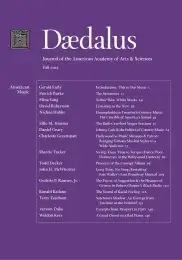The Screamers
While screaming during popular music performances (at least loudly amplified ones) has become unremarkable and even expected, the mid-twentieth-century United States witnessed a series of debates over the appropriateness and significance of screaming. These debates, fraught with moral judgment and often open panic, focused on issues central to American popular music: sexuality, race, class, and the rights and responsibilities of the individual. Tracing the discourse surrounding screaming audiences from the nineteenth century to the present reveals that observers have associated female screamers primarily with sexual impropriety while male screamers more often have been depicted as a potentially violent mob. While commentary on screaming often reinforces racial and gender stereotypes, screaming maintains its subversive power because it effectively dramatizes the tension among social expectations, group solidarity, and individual freedom.
In 2011, my friend of over twenty years, Jeff Burke (no relation), posted to YouTube a short video with the straightforward title “I Saw Iron Maiden.” It’s only two-and-a-half minutes long, and as of this writing it’s still online. The video records Jeff’s good times at a recent concert by the titular heavy metal band, best known for such albums as The Number of the Beast (1982) and Powerslave (1984). Like many friends who attended my predominantly white, relatively affluent, suburban high school during the George H.W. Bush administration, I am fond of Iron Maiden; but Jeff, a fellow alumnus, remains a fan as in fanatic.
Although his video includes a few brief, grainy shots of the band on stage, most of its running time documents Jeff’s reactions to the performance. Jeff, who has maintained an adolescent joie de vivre well into his thirties, makes this more exciting than you might expect. He plays air drums. He raises his hand in triumph as Iron Maiden launches into a favorite song. He bangs his head in the quintessential heavy metal gesture. Although he never smiles, he maintains an ecstatic gleam in his eyes that betokens an almost frightening level of commitment to the music . . .
